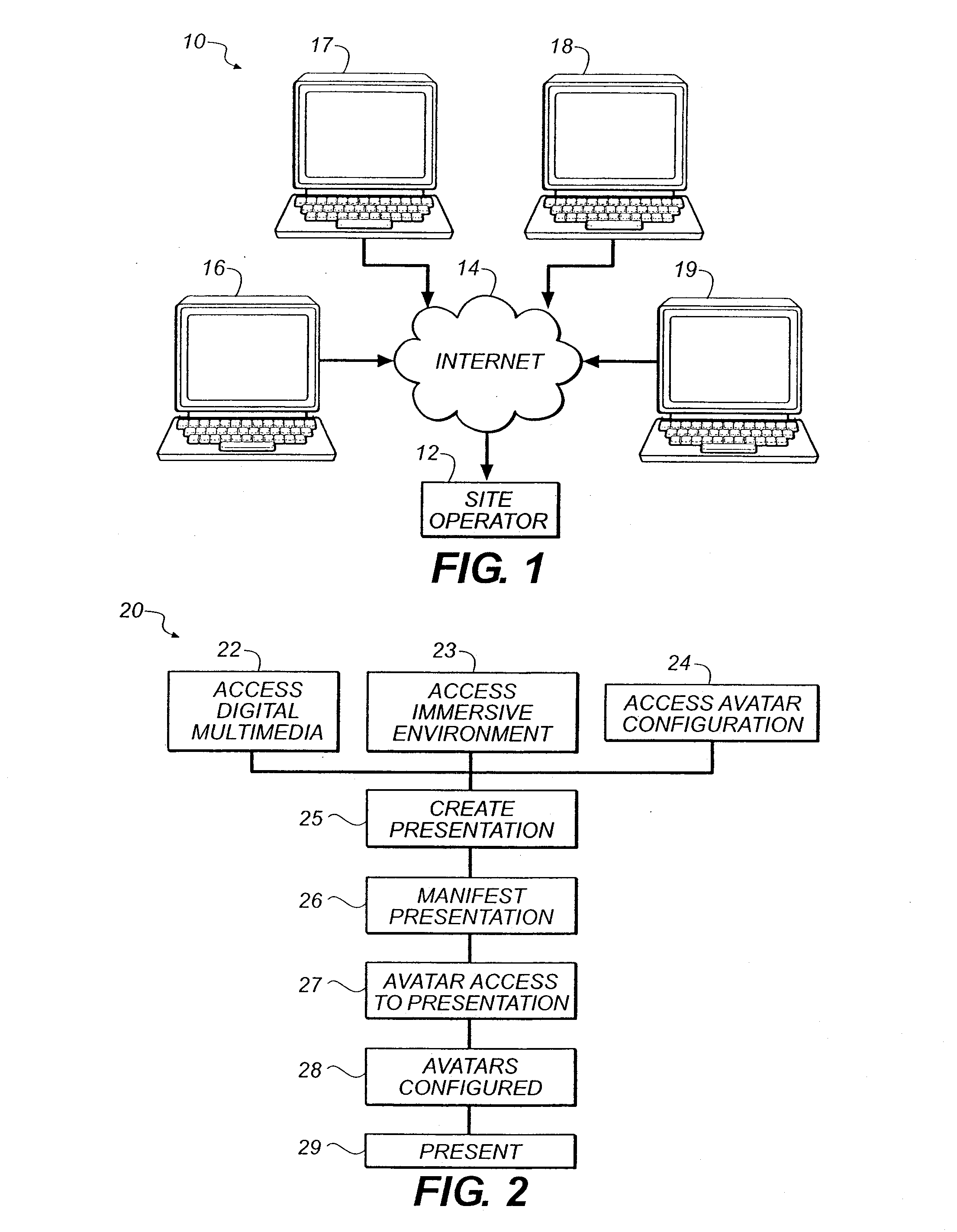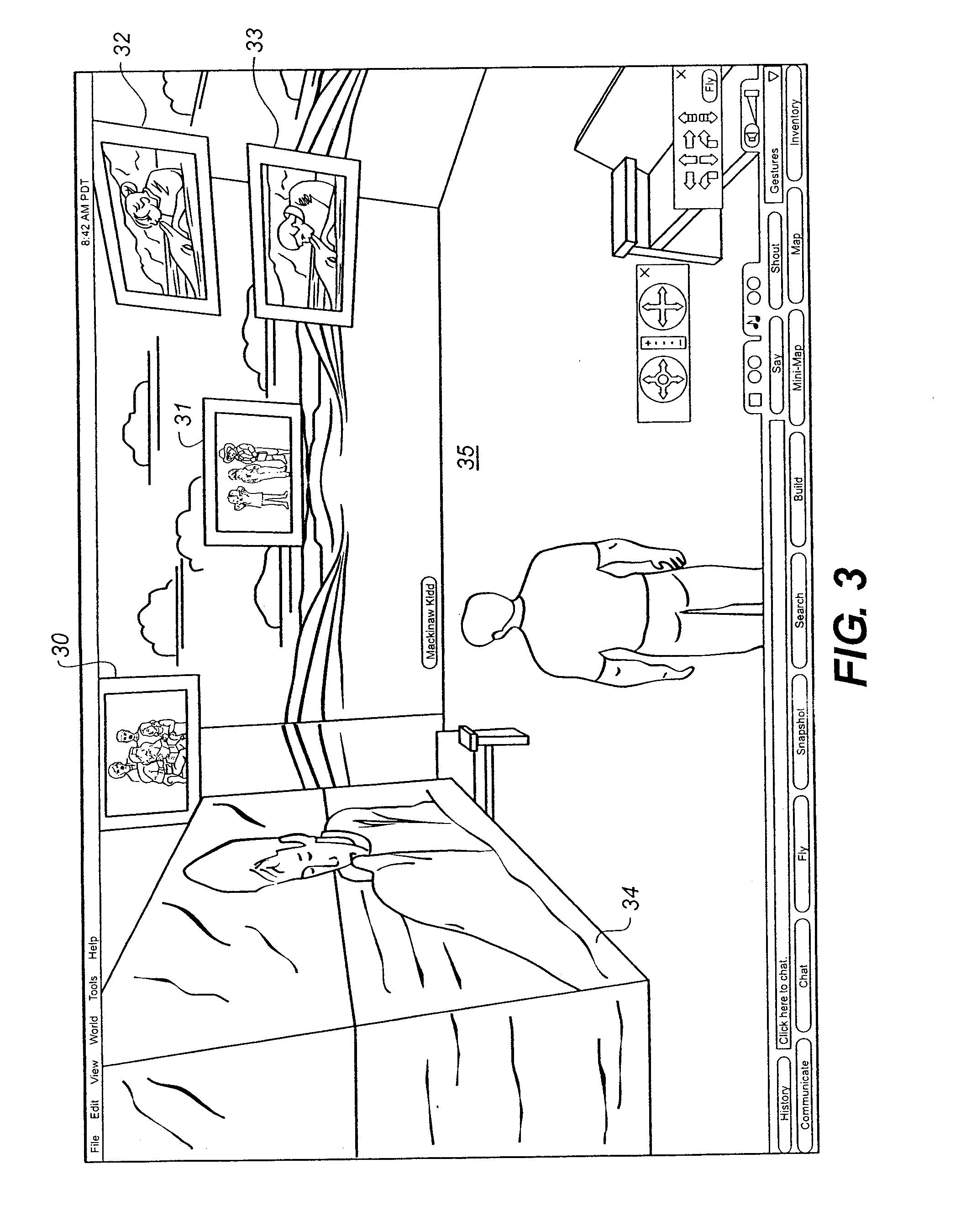Digital multimedia sharing in virtual worlds
a multimedia sharing and virtual world technology, applied in the virtual environment field, can solve the problems of affecting the viewing experience affecting the presentation of digital photography and digital video, and sharing images with distant relatives could take many days, so as to overcome significant shortfalls in viewing
- Summary
- Abstract
- Description
- Claims
- Application Information
AI Technical Summary
Benefits of technology
Problems solved by technology
Method used
Image
Examples
Embodiment Construction
[0056]The key components of this method are described in detail below with examples of preferred embodiments. It is understood that other embodiments may be utilized and modifications may be made without departing from the scope of the present invention.
[0057]For the purposes of the present invention a virtual world is a navigable, visual computer-simulated digital immersive virtual environment intended for its users to virtually inhabit and interact with other users via avatars (described below). These virtual worlds are typically accessed by users via a computer over a communication network such as the internet. The virtual world can be drawn, rendered by computers, or may be generated from photographic or video content, by combination of these methods, or other means. This virtual environment typically is represented in the form of a two-dimensional or three-dimensional space. The user controls their own avatar actions through the use of their computer or other appropriate electr...
PUM
 Login to View More
Login to View More Abstract
Description
Claims
Application Information
 Login to View More
Login to View More - R&D
- Intellectual Property
- Life Sciences
- Materials
- Tech Scout
- Unparalleled Data Quality
- Higher Quality Content
- 60% Fewer Hallucinations
Browse by: Latest US Patents, China's latest patents, Technical Efficacy Thesaurus, Application Domain, Technology Topic, Popular Technical Reports.
© 2025 PatSnap. All rights reserved.Legal|Privacy policy|Modern Slavery Act Transparency Statement|Sitemap|About US| Contact US: help@patsnap.com



